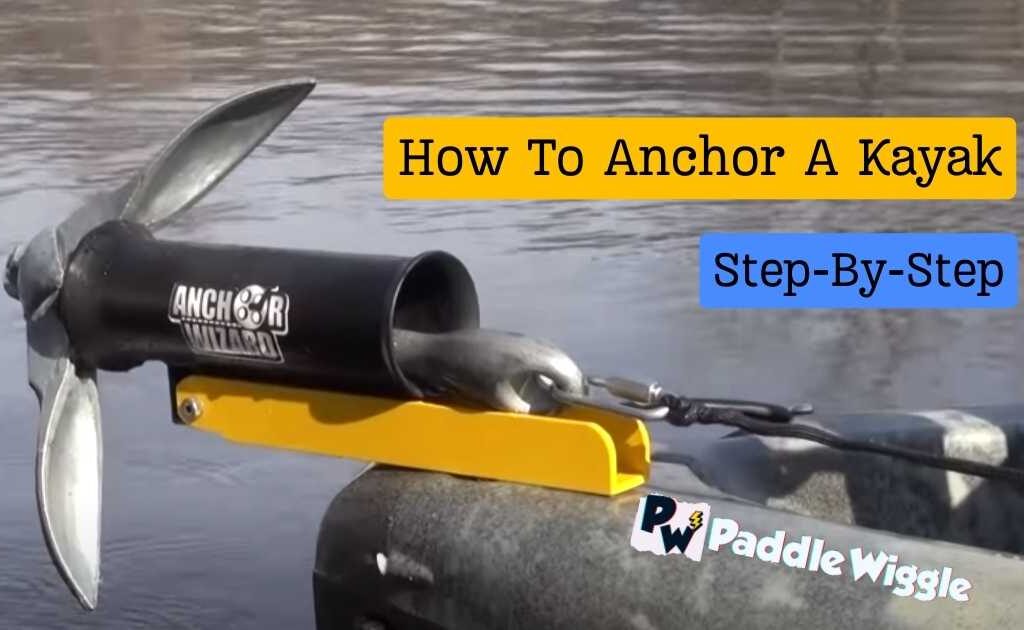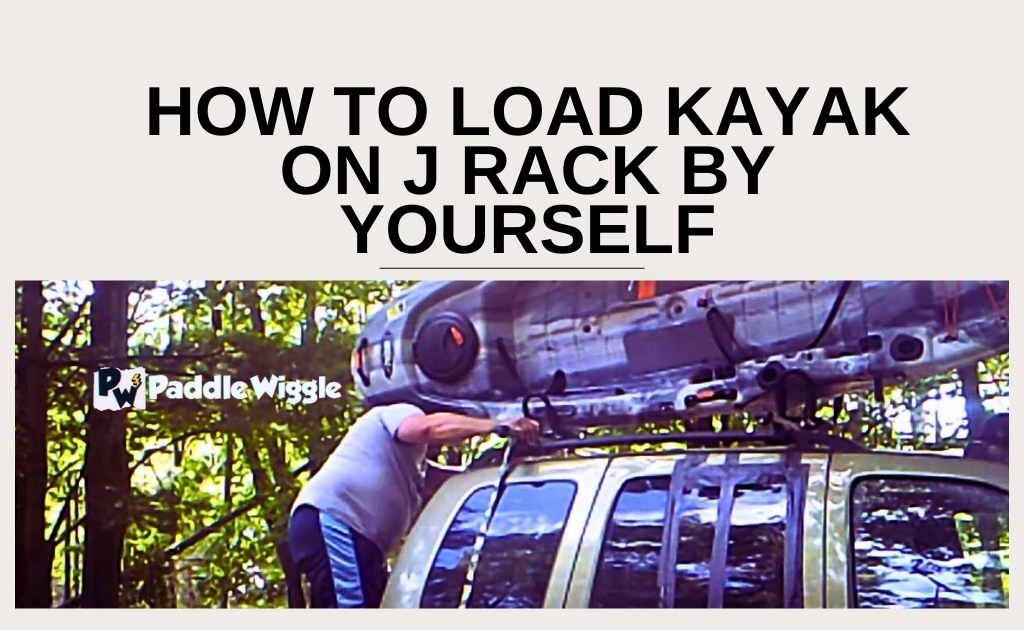Do you love kayaking but don’t have a roof rack on your vehicle to transport your kayak to your next adventure? Don’t let that stop you! Transporting your kayak without a roof rack may seem like a daunting task, but with the right tools and steps, it can be done safely and securely.
Throughout this guide, we’ll cover everything from the necessary equipment to the step-by-step process of securing your kayak. Whether you’re a seasoned kayaker or a beginner, this guide is for you!
Now let’s get started.
Contents
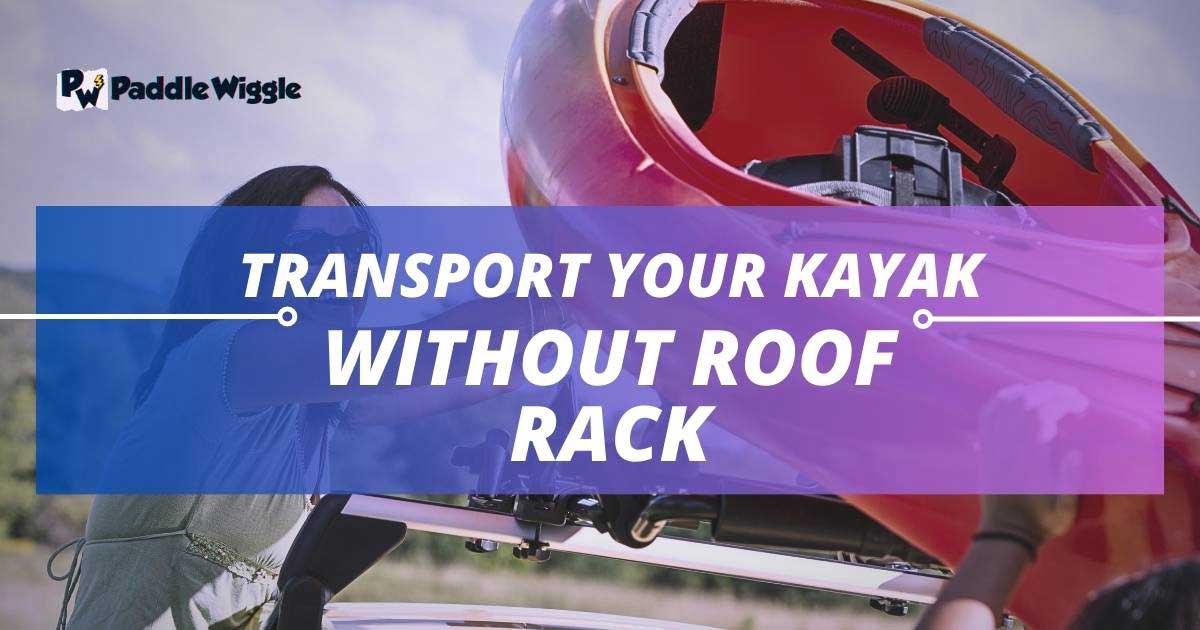

Know how to transport a kayak without a roof rack
Transporting a kayak without a roof rack may seem challenging, but it can be done easily with the right tools and steps. Here’s a precise explanation of how you can transport your kayak without a roof rack:
Gather the Necessary Equipment first!
If you want to transport your kayak without a roof rack, you need to make sure you have the right equipment to keep your kayak safe and secure. Let’s take a look at what you’ll need:
Foam Blocks
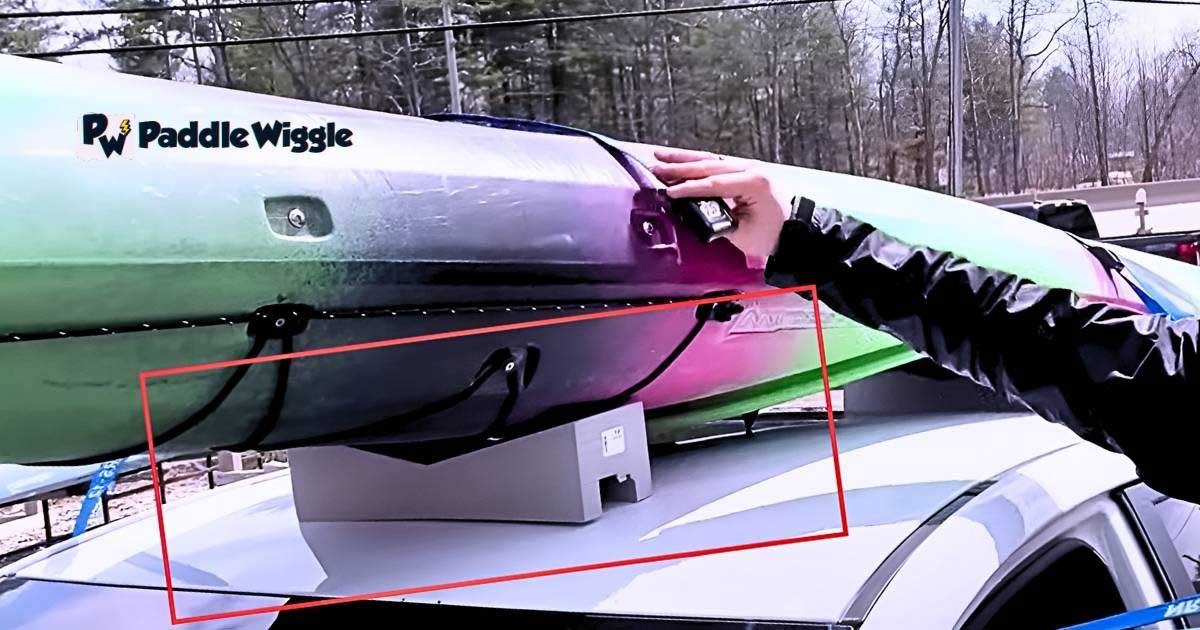

Foam blocks are lightweight, durable, and can be easily molded to fit the shape of your kayak. They act as cushions to protect your kayak from scratches and dents and provide a stable base to rest your kayak on.
Kayak Carrier, but not mandatory!
There are different types of kayak carriers available, including J-hooks, saddles, and cradles. J-hooks are simple and affordable and attach to the roof of your vehicle with straps. Saddles and cradles are more advanced and provide more support and stability for your kayak.
Tie-Down Straps
Tie-down straps are essential to secure your kayak to your vehicle during transport. Cam buckle straps or ratchet straps are recommended, as they are easy to use and can be tightened securely.
Protective Cover or Tarp
A protective cover or tarp can help protect your kayak from debris, dirt, and weather during transport. It’s important to ensure that the cover is secured properly and doesn’t create any additional drag on your vehicle.
Other Miscellaneous Equipment
Other equipment that may be useful when transporting a kayak without a roof rack includes bow and stern lines, a roof rack pad, and a roof rack extender for larger vehicles.
Now it’s time to prepare
Now you need to do some preparation to make sure everything goes smoothly. Here are some things to keep in mind:
- Check your vehicle’s weight limit: Make sure that your vehicle can handle the weight of your kayak and all the equipment needed for transport. Check the owner’s manual or contact the manufacturer to find out the weight limit.
- Check your kayak’s weight: To make sure that your kayak is within the weight limit for your vehicle, you need to know how much your kayak weighs. You can usually find this information on the manufacturer’s website or by checking the label on your kayak.
- Clean your kayak: Before you transport your kayak, it’s important to clean it thoroughly to remove any debris or dirt that could scratch or damage your vehicle. Use a mild detergent and water to clean your kayak, and rinse it off well.
- Choose a safe and secure location to load and unload your kayak: Look for a level area where you can safely load and unload your kayak without risking injury or damage to your vehicle or kayak.
Load And Transport Your Kayak Without Roof Rack
If you’re planning to transport your kayak without a roof rack, it’s important to take a few precautions to ensure a safe and successful journey.
Steps for loading and transporting a kayak without a roof rack:
Follow the step-by-step guide and make this even easier:
Step #1: Install foam blocks or a kayak carrier on your car
The first step to transport your kayak without a roof rack is to install foam blocks. These blocks are designed to sit on top of your car’s roof, providing a stable base for your kayak. Alternatively, a kayak carrier is a set of adjustable brackets that clamp onto your car’s roof and hold your kayak in place.
Here’s what you need to know:
- Choosing the right foam blocks: You want to make sure the foam blocks you choose are the right size and shape for your car and kayak. Check the weight capacity of the foam blocks to make sure they can support your kayak’s weight.
- Installing the foam blocks: Place the foam blocks on your car’s roof in the spot where you want to transport your kayak. Make sure they’re aligned with the center of your car and are spaced apart so they match the width of your kayak. Use the straps that come with the foam blocks to secure them to your car’s roof.
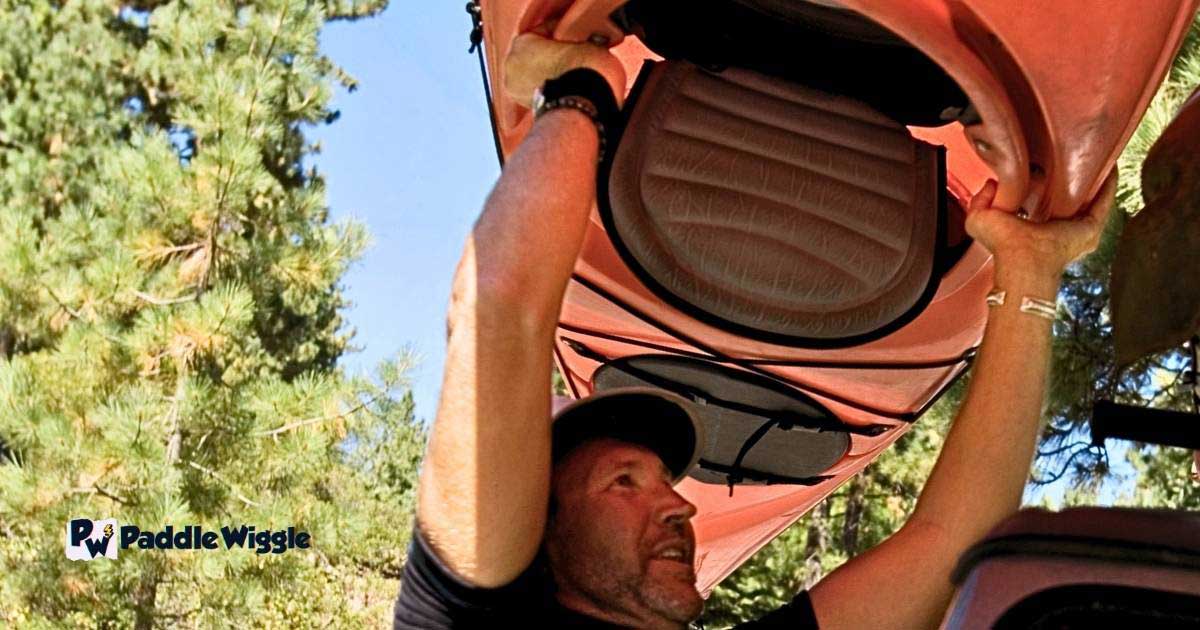

- Loading the kayak: Carefully lift your kayak and place it on the foam blocks. The foam blocks will help keep the kayak stable and prevent it from sliding around while you’re driving. Make sure the kayak is centered on the foam blocks and is straight.
Step #2: Secure the kayak to the foam blocks or carrier using tie-down straps
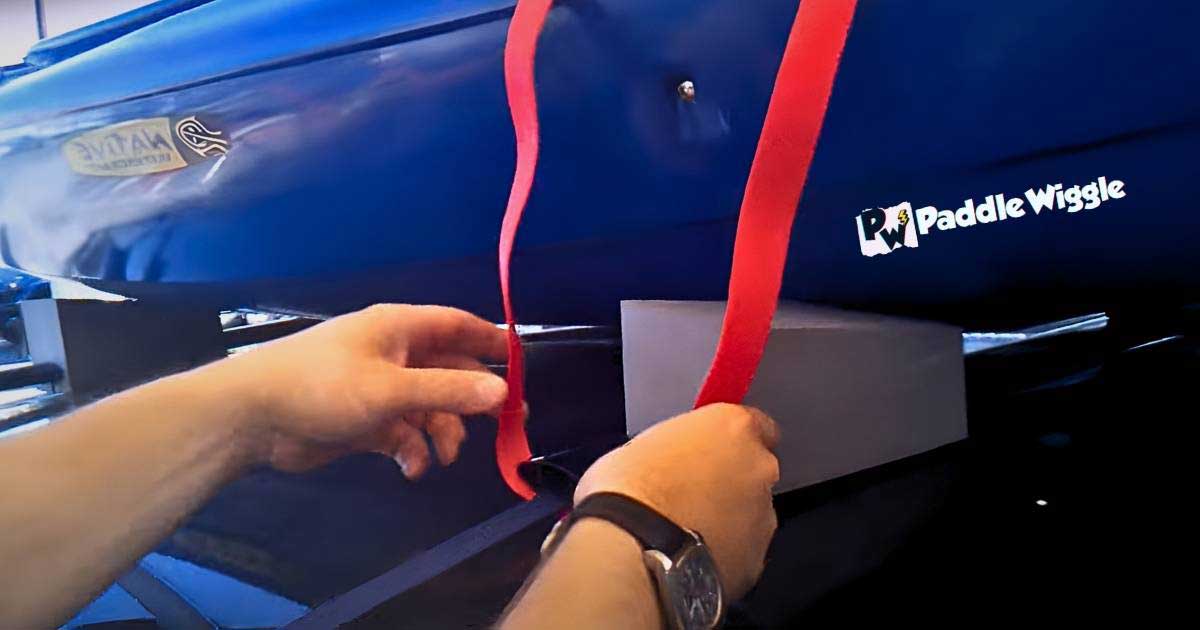

Use tie-down straps to secure the kayak to the foam blocks or carrier and prevent it from moving during transport. You’ll want to crisscross the straps over the kayak and tighten them so the kayak is snug against the foam blocks.
Wrap the straps around the kayak and through the doors of your car, then tighten them securely. Make sure the straps are evenly spaced and not too tight or too loose. So, double-check the straps to make sure they’re secure before you hit the road.
Step #3: Cover the kayak with a protective cover or tarp
After securing your kayak to the foam blocks or carrier, the next step is to protect it during transport by covering it with a protective cover or tarp. This will help protect your kayak from dirt, debris, and the elements during transport. Use a cover that fits snugly over the kayak and secure it in place with additional straps or bungee cords.
Here’s what you need to know:
- Choosing the right protective cover or tarp: Make sure to choose a cover or tarp that is big enough to fully cover your kayak and provide enough protection from the wind, rain, and dust during transport.
- Installing the cover or tarp: Once you have chosen the right cover or tarp, drape it over the kayak and make sure it is snugly secured. You can use bungee cords or additional tie-down straps to secure the cover or tarp in place. This will not only keep your kayak protected but also prevent it from getting scratched or damaged during transport.
Step #4: Check all straps and covers for tightness and security before driving
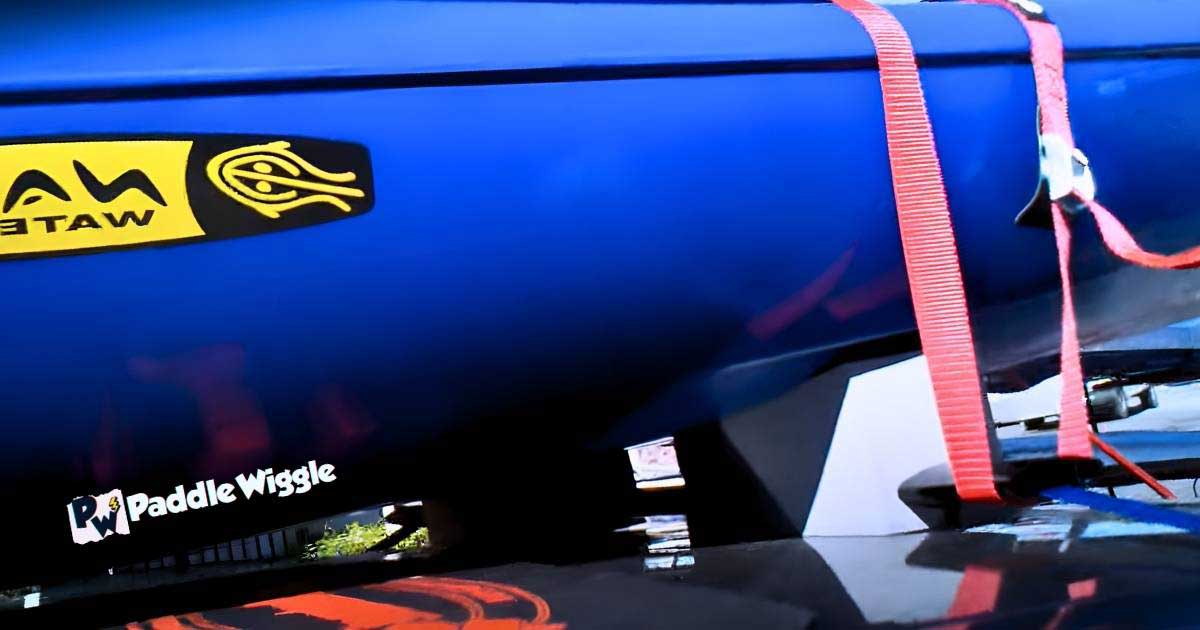

Before hitting the road, double-check that all straps and covers are tightly secured and won’t come loose during transport. It’s also a good idea to test the stability of the kayak by giving it a gentle shake.
Remember, it’s a crucial step! This makes sure that your kayak is secure and won’t move during transport, which will keep it safe until you reach your destination.
Step #5: Drive safely and cautiously while transporting your kayak
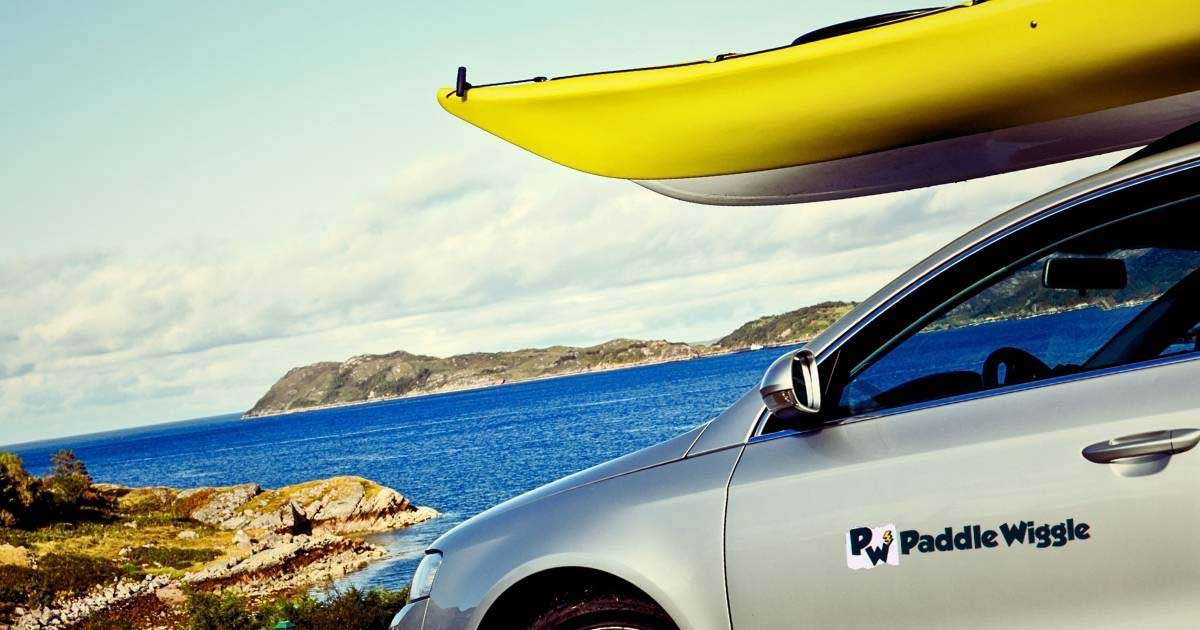

Keep in mind that your car’s handling may be affected by the added weight and wind resistance of the kayak. Take extra care when accelerating, braking, turning, and changing lanes. Avoid sudden stops or turns, and stay within the speed limit.
Here are some tips to help you drive safely while transporting a kayak:
- Drive slowly and carefully. Your car will be heavier with the kayak on top, so it may take longer to stop or turn.
- Avoid sudden movements or sharp turns. Make sure to give yourself plenty of space when turning or changing lanes.
- Check your mirrors often to make sure the kayak is still secure.
- Be aware of low clearance areas like garages or overpasses, and avoid them if possible.
By following these steps, you can safely transport your kayak without a roof rack and have fun on your next water adventure!
Now, it’s time to Unload the kayak
When you are done transporting your kayak, it’s time to safely unload it from your car. And it’s just as important as loading it.
First, find a good spot that is flat, dry, and doesn’t have anything that could make you trip or slip. Then, take off any cover or tarp you used to protect your kayak during transport. Loosen the straps that hold the kayak in place on the foam blocks or carrier. Now you can unload it.
After that, carefully lift the kayak off the foam blocks or carrier, making sure to hold it evenly so it doesn’t tip over.
And finally, put away all the equipment you used to transport the kayak, like the foam blocks, carrier, and straps, in a safe place.
Avoid 5 Mistakes When Transporting Kayak Without Roof Rack
Transporting your kayak without a roof rack can be hard, but don’t worry. There are some things you need to watch out for when carrying your kayak to keep it safe. If you know what these things are, you can avoid them and make sure your kayak arrives safely at your destination.
Here are the top five things you should avoid when transporting your kayak without a roof rack:
#1. Using improper foam blocks or carriers
Using foam blocks or carriers that are not designed for kayaks can lead to instability and damage to your kayak during transport.
#2. Overlooking weight limits
Overloading your kayak or your vehicle can lead to unsafe driving conditions and can also damage your kayak and your car.
#3. Improperly securing your kayak
Failing to properly secure your kayak with tie-down straps can lead to it falling off your car while driving, which can cause accidents and serious damage.
#4. Rushing during loading and unloading
Being in a hurry can cause you to be careless when loading or unloading your kayak, leading to accidental damage.
#5. Driving recklessly
Sudden stops, sharp turns, and reckless driving can cause your kayak to shift or fall off your car, leading to damage and accidents.
Learn More
Can I Transport A Kayak On My Car Without A Roof Rack?
Yes, you can transport a kayak on your car without a roof rack by using foam blocks or a kayak carrier.
Foam blocks are inexpensive and easy to use, and they can be placed on the roof of your car to support your kayak.
A kayak carrier is another option that provides more stability and security for your kayak during transport. It’s important to properly secure your kayak with tie-down straps to prevent it from moving or shifting while driving.
Additionally, it’s important to check your vehicle’s weight limit and ensure that you’re not exceeding it when transporting your kayak. Always drive safely and cautiously when transporting your kayak without a roof rack.
Is It Safe To Transport A Kayak Without A Roof Rack?
Yes, transporting a kayak without a roof rack is safe if done correctly. However, it’s important to take certain precautions to ensure the safety of both yourself and others on the road.
First, make sure your kayak is securely fastened to your car using appropriate tie-down straps and foam blocks or a kayak carrier. It’s also important to check the roof’s capacity of your car and ensure that you’re not overloading it.
And when driving, be sure to take it slow and avoid sudden stops or turns. Additionally, always choose a safe and secure location to load and unload your kayak, and be sure to properly store all equipment when not in use. By taking these precautions, you can safely transport your kayak without a roof rack.
How Do I Secure My Kayak Without A Roof Rack?
If you don’t have a roof rack, there are still ways to secure your kayak to your car. You can use foam blocks or a kayak carrier to support your kayak and tie-down straps to secure it in place.
Foam blocks can be placed on the roof of your car to create a stable base for the kayak, while a kayak carrier can be attached to the rear of your car.
Once you have chosen your method of securing the kayak, the next step is to use tie-down straps to hold it in place. The straps should be placed around the kayak, through the doors or windows of your car, and tightened until the kayak is snug and secure. It’s important to ensure that the straps are not too tight, as this can damage the kayak, but not too loose, as the kayak can move around during transport.
In addition to tie-down straps, you can also use ropes or bungee cords to further secure the kayak to your car. However, it’s important to be careful not to overtighten these, as they can cause damage to the kayak or your car. And you can use a cover to prevent damage to your kayak during transport.
Remember to check your vehicle’s top weight limits before transporting your kayak, and drive carefully and cautiously to avoid any accidents.
Final Word
In summary, you can safely and easily transport your kayak without a roof rack by following a few simple steps. First, check the weight limits of your car and kayak. Then, choose the right foam blocks or kayak carrier and secure your kayak with tie-down straps. Always drive safely and cautiously, and be careful when unloading your kayak.
Remember to regularly check your tie-down straps during transport, avoid sudden stops or turns while driving, and use caution when loading and unloading your kayak. By following these tips, you can transport your kayak with confidence and enjoy your next adventure on the water!

